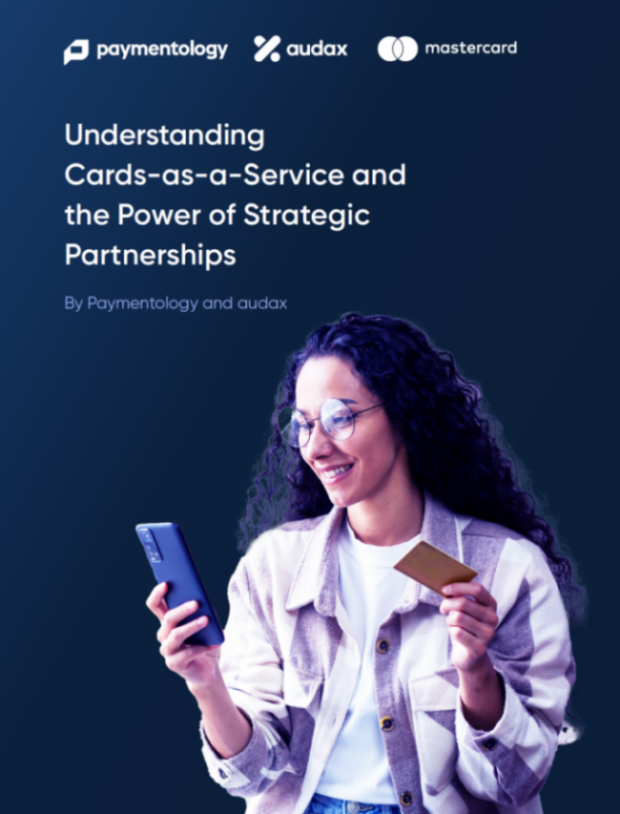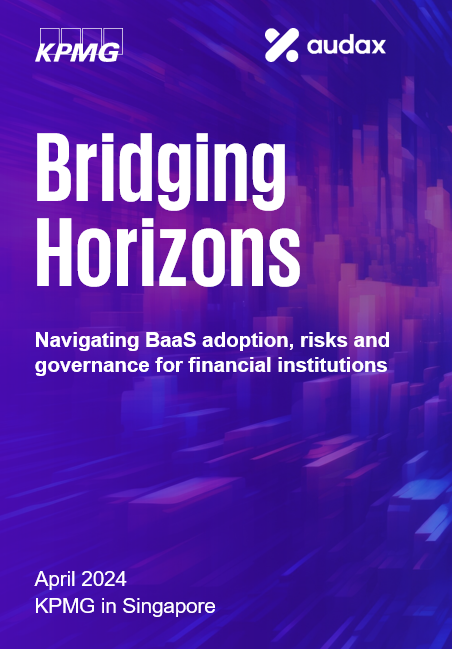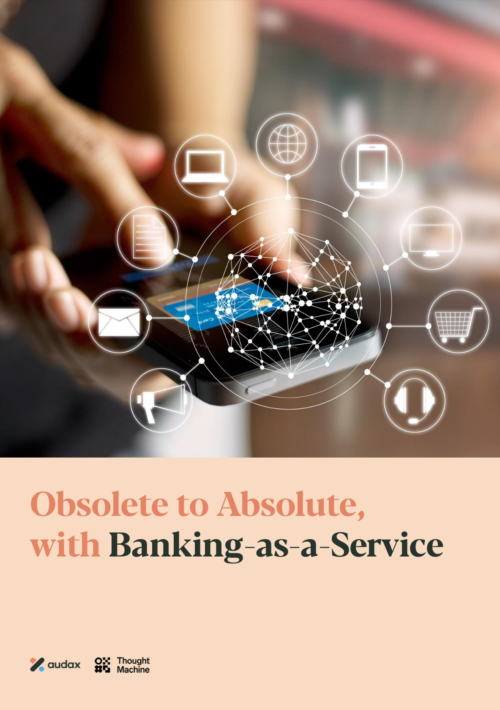The Complexity of Change
According to McKinsey[1], over half of digital banking transformations surpass their planned timelines and budgets, or even fail. This shortfall is largely due to underestimating the complexities involved, such as intricate interfaces, data management, and the need for coordination across different initiatives. Leadership might not fully engage all stakeholders or accurately assess the necessary changes to business processes and the depth of integration required with existing IT architectures, making the role of complementary technologies even more vital.
This is where audax comes into play, offering a solution that marries innovation with tradition, ensuring that banks can step into the future with minimal headaches.
The Approach: Dual-mode Evolution
Our tech stack at audax allows banks to adopt a dual-mode evolution, where we progressively construct a new digital core with novel products and channels while optimising the legacy core’s value.
For example, this can enable the bank’s legacy core to continue handling deposits efficiently while introducing a new product engine for loan processing. The result is a harmonious blend of old and new, ensuring that banks can offer enhanced services without the risk of data duplication or system incompatibility.
This also ensures that client details are aligned and consolidated within the core banking system, preventing any duplication of client information by the product engine. Moreover, all relevant reports are designed to integrate seamlessly with the core banking system and other financial and regulatory reporting platforms.
Advantages of our dual-mode evolution include rapid time to market (i.e. 6 – 9 months), reduced complexity and risks, and the ability to reuse proven components, ensuring a seamless transformation to a digital powerhouse.
While the transition can present challenges, such as the potential knowledge gap within legacy teams concerning new technologies, we advocate for comprehensive training programs and phased integration plans that will ease the adoption process.
Our Success Story: Standard Chartered Bank
Standard Chartered Indonesia’s collaboration with Bukalapak to implement Banking-as-a-Service (BaaS) is a testament to the success of dual-mode evolution. This approach enabled the audax’s plug-and-play tech stack to sit next to Standard Chartered’s existing banking infrastructure, facilitating the launch of digital banking service BukaTabungan. It boasts rapid, paperless onboarding, achievable in as quick as 2 minutes, and was able to (i) 3X Standard Chartered’s customer base in Indonesia within 6 months (ii) attract 98 percent new to bank customers (expanding into new customer segments) (iii) attain 85 percent application approval rate; of which (iv) 97 percent of account openings are done in real time; (v) implement fast onboarding processes, thus reducing onboarding costs.
audax facilitates this via:
– Seamless Integration with Existing Banking Core: audax’s technology is designed to work alongside Standard Chartered’s existing core banking systems, ensuring that both the new and traditional banking operations are unified under the same reporting structure, party master, general ledger (GL) and more. This integration means that all customer and transaction data is consistently and accurately reported, providing a comprehensive view of the bank’s operations.
– Unified Data Management: By integrating with the existing banking core, audax enables a seamless deduplication process for existing-to-bank (ETB) customers. This means that customer data from both the new BaaS platform and the existing core banking system is consolidated and managed under a single system of record. This reduces the risk of duplicate records, ensuring that customer information is accurate and up-to-date.
– Enhanced Customer Experience: The integration of audax’s tech stack with Standard Chartered’s infrastructure allows for a smoother, more efficient customer onboarding experience. The paperless, rapid onboarding process is fully digital and takes as fast as 2 minutes, reducing the time and effort required for new customers to start using the bank’s services, enhancing customer satisfaction and engagement.
– Operational Efficiency: The dual-mode approach helps Standard Chartered maintain high operational efficiency by leveraging the strengths of both traditional and modern banking systems. audax’s technology supports real-time processing and high approval rates, which contribute to lower operational costs and higher approval rates.
– Scalability and Flexibility: The plug-and-play nature of audax’s cloud-native tech stack provides Standard Chartered with the flexibility to scale their BaaS offerings quickly and efficiently, with the ability to support millions of customers. As the market evolves, the bank can adapt and expand its services without overhauling its existing infrastructure.
This seamless fusion of innovation and tradition underscores the potential for banks to expand and modernise their services in today’s digital age.
The urgency for banks to transform their legacy systems cannot be overstated. As detailed in the collaborative whitepaper between Deloitte and nCino, “To Buy or To Build”[2], the banking industry is at a pivotal moment. Banks face a critical decision: to build their digital transformation solutions in-house or to buy and implement existing technologies. It continues to highlight the importance of leveraging digital technology for competitive advantage, emphasising the need for financial institutions to embrace change to improve customer experience and operational effectiveness.
At audax, we are a comprehensive digital banking solutions provider empowering banks and financial institutions to scale and modernise at speed. We stand out from other technology providers due to our roots in Standard Chartered nexus, as the underlying full tech stack that enabled Standard Chartered to become the first global bank to provide Banking-as-a-Service (BaaS) in Asia. With a promise of rapid deployment, audax distinguishes itself by offering a speed-to-market advantage, launching within 6-9 months.
As the banking industry continues to navigate the complexities of digital transformation, audax stands ready to bridge the gap between legacy systems and the future of banking. By embracing a dual-mode evolution that integrates rather than replaces, banks can achieve a competitive edge in a rapidly evolving digital world.
[1] Why most digital banking transformations fail – and how to flip the odds (McKinsey, 2023)
[2] To Buy or To Build (Deloitte & nCino, 2022)










